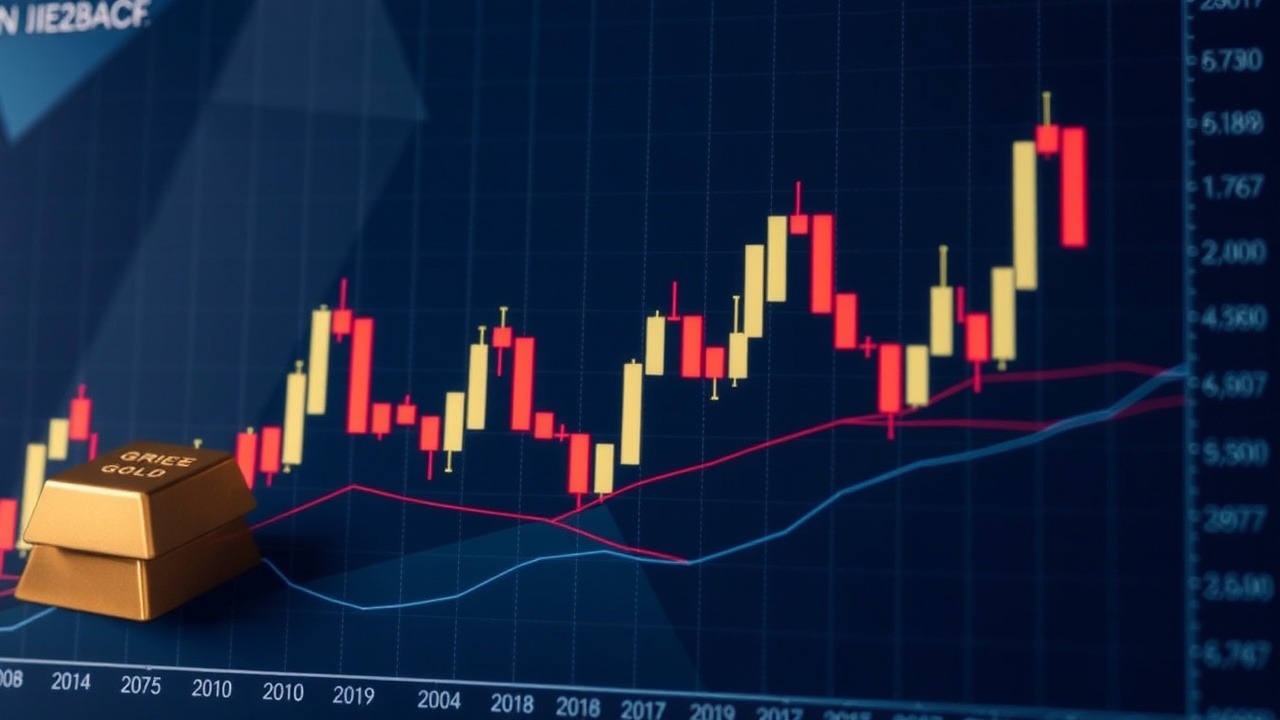
There are several ways to invest in gold, including purchasing the yellow metal itself, purchasing gold-mining stocks, or investing in a gold exchange-traded fund (ETF)
We examine each strategy's advantages and disadvantages.
Investing in gold has existed since the beginning of civilization, but there haven't been as many options to purchase the yellow metal.
For gold investors, 2024 and the first few months of 2025 have been favorable because of robust demand, which has driven the price of gold to multiple new highs and increased by more than 40% in the last 12 months.
Track every market on TradingView "A change in investor sentiment, particularly among Western investors who helped fuel the gold ETF rally, has been the main driver of high prices," says John Reade, market strategist at the World Gold Council.
2024 saw a record level of demand for gold. The global head of research at the World Gold Council, Juan Carlos Artigas, writes, "Total gold demand (including OTC investment) rose 1 percent y/y in Q4 to reach a new quarterly high and contribute to a record annual total of 4,974t."
When you take the background of monetary and geopolitical policy into account, it makes sense. In an increasingly volatile world, gold is frequently regarded as a safe-haven asset, with investors using it as a store of value. Additionally, as interest rates decline, gold gains appeal. It does not pay interest, in contrast to cash, but this is less significant when interest rates decline.
In recent years, the price of gold has also been significantly influenced by central bank purchases. The price of gold has increased due to the demand from emerging market countries, especially those that are antagonistic to the US, who are searching for an alternative to the dollar.
Purchasing gold bullion or investing in a gold exchange-traded fund (ETF) are two options available to investors who are optimistic about the future of the metal's price or who wish to include it in their portfolio as a hedge.
We examine each strategy's advantages and disadvantages.
How to make investments in real gold.
Purchases of physical gold, or bullion, in the form of gold coins and bars are one way to include gold in your portfolio. Jewelers, precious metal dealers like Sharps Pixley or GoldCore, and government mints like the UK's Royal Mint are the places to buy physical gold.
Because the market is unregulated, you should exercise caution to stay away from scams. Verifying whether a dealer is a member of the London Bullion Market Association (LBMA), which establishes industry standards, is one way to stay safe.
Russia's gold ingots.
One of the most straightforward methods to invest in gold is to purchase bars or ingots.
(Photo courtesy of Bloomberg Creative via Getty Images) Much like any investment, it is crucial to conduct your own price research. Selling for more than the spot price and purchasing for less is how gold dealers profit. The weight and gold content of the bullion, the seller you purchase from, and the state of supply and demand will all affect the spread or difference.
Since there is no stamp duty or VAT to pay on purchases, investing in physical gold has tax benefits. Furthermore, because they are regarded as legal tender, sales of coins made by the Royal Mint, such as the well-known Britannia and gold sovereigns, are tax-exempt.
Because gold coins, also known as numismatic coins, are more rare and frequently prized as collectibles, they may be worth more than bars. The most popular gold coin is the one-ounce South African Krugerrand, which was first produced in 1967 and typically fetches the lowest premium over the spot price. The one-ounce Britannia and the 22-carat gold UK gold sovereign are two other well-liked coins.
Despite the allure of purchasing a gold bar or coin, you should also think about the charge for delivery, insurance, and safe storage. One option would be to use an online investment service like BullionVault, which enables you to purchase gold coins or bars that are kept in its vaults. Additionally, the Royal Mint offers a digital option that enables you to purchase actual gold, silver, or platinum based on monetary value rather than weight. After that, the Royal Mints vault can be used to store it.
How gold ETFs are invested in.
Using exchange-traded funds (ETFs) or exchange-traded commodity (ETC) products is a more straightforward and affordable method of investing in gold. For additional information, see our article on the top gold exchange-traded funds. ETFs or ETCs with physical backing, like iShares Physical Gold (LON:SGLN), are generally preferred by analysts over leveraged products that depend on derivatives, which adds complexity.
"An ETC owns physical gold and tracks the price," says Shore Financial Planning's investment director, Ben Yearsley. Due to its simplicity and ability to be held in both your SIPP and ISA, it's as close as most people can get.
Investing in gold ETFs will primarily cost you money because of the ongoing charge and any platform fees. Although investors can trade shares for actual gold coins or bars through The Royal Mint Responsibly Sourced Physical Gold ETF (LON:RMAP), you won't actually own any gold directly.
Investing in gold ETFs or ETCs will enable you to profit from price increases. Of course, if the price of gold declines, you will also lose money.
How to buy stocks in gold mining companies.
Instead of purchasing real gold, you might want to support the businesses that are engaged in gold mining or exploration. Purchasing stock in gold miners would be necessary to do this. A company's success will be correlated with its exploration activities, business strategy, and management, so this calls for a lot more research than simply monitoring the price of gold.
Ben Seager-Scott, chief investment officer at Forvis Mazars, says, "Many investors think that gold mining stocks basically give you a leveraged play on the gold price, and sometimes they are right, sometimes they are wrong."
It mostly depends on how the business is managed. He continues, "You must take into account all the other effects of investing in an operating business, including direct mining costs, operating costs, taxes, and the business environment."
According to Evangelos Assimakos, investment director at Rathbones Investment Management, investors should also consider the company's size.
In the event that their plans are postponed or their expected output is reduced, "smaller companies will typically have a greater proportion of their operations in mines that have yet to start production and thus carry more execution risk," he says.
Although there may be more benefits to this as well, you must take the potential for losses into account.
The advantages and disadvantages of gold investing.
Critics frequently point to the lack of income from physical gold or from gold exchange-traded funds (ETFs) that do not pay dividends when listing the drawbacks of gold investing. Furthermore, it can be challenging to determine whether you are purchasing gold at the top or bottom of the market due to its short- and medium-term volatility.
Advocates, however, believe that the metal is a good diversifier because its performance and value are not correlated with those of other assets. Additionally, it is known for holding its value well during inflationary times.
The price of gold should benefit from the fact that interest rates are currently declining in the majority of the world's major economies. In "Is now a good time to invest in gold" we examine the fortunes of gold in greater detail.














Leave a comment on: Tips for gold investing